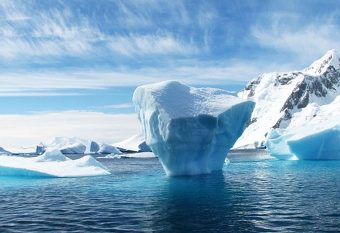
The ice sheets of Antarctica may be hiding the world’s largest volcanic range, according to a new study from the University of Edinburgh. The new work discovered around 100 “new” volcanos in the Antarctic region, some of which are as tall as 3,850 meters.
These findings are notable because as the ice sheets in Antarctica melt, and pressure on these volcanos is thus relieved, an outburst of volcanic activity is a real possibility. Earlier research has provided tantalizing evidence that as ice sheets and glaciers melt, there’s often a marked uptick in volcanic and seismic activity, which lasts for quite some time.
So, the potential here is for the melting ice sheet in West Antarctica to kick off volcanic activity in the region — which would itself greatly contribute to the speed at which regional ice sheets melt. The potential is also there for the release of large amounts of greenhouse gases directly from the volcanos.
In relation to this, it’s probably worth mentioning the fact that there are known to be coal deposits in Antarctica, which could potentially be ignited underground through volcanic or seismic activity. While such an event is perhaps not too likely, it should be remembered that some earlier mass extinction events were precipitated by the ignition of vast underground coal seams.
The press release provides more: “They analysed the shape of the land beneath the ice using measurements from ice-penetrating radar, and compared the findings with satellite and database records, as well as geological information from aerial surveys.
“Scientists found 91 previously unknown volcanoes, ranging in height from 100 to 3850 metres. The peaks are concentrated in a region known as the West Antarctic Rift System, spanning 3,500 kilometres from Antarctica’s Ross Ice Shelf to the Antarctic Peninsula.
“… Their results do not indicate whether the volcanoes are active, but should inform ongoing research into seismic monitoring in the area. Volcanic activity may increase if Antarctica’s ice thins, which is likely in a warming climate, scientists say. Previous studies and the concentration of volcanoes found in the region together suggest that activity may have occurred in previous warmer periods.”
The new study is detailed in a paper published in the Geological Society Special Publications series.
Source: cleantechnica.com
